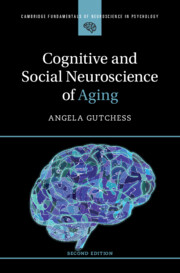Book contents
- Cognitive and Social Neuroscience of Aging
- Cambridge Fundamentals of Neuroscience in Psychology
- Cognitive and Social Neuroscience of Aging
- Copyright page
- Contents
- Figures
- Preface
- Acknowledgments
- Chapter One Introduction to the Cognitive Neuroscience of Aging
- Chapter Two Brain Mechanisms of Aging
- Chapter Three Cognition and Aging
- Chapter Four Memory and Aging
- Chapter Five Emotion, Decision Making, and Aging
- Chapter Six Social Cognition and Aging
- Chapter Seven Alzheimer’s Disease and Other Disorders with Age
- Chapter Eight Current and Future Directions
- References
- Index
- References
References
Published online by Cambridge University Press: 14 February 2025
- Cognitive and Social Neuroscience of Aging
- Cambridge Fundamentals of Neuroscience in Psychology
- Cognitive and Social Neuroscience of Aging
- Copyright page
- Contents
- Figures
- Preface
- Acknowledgments
- Chapter One Introduction to the Cognitive Neuroscience of Aging
- Chapter Two Brain Mechanisms of Aging
- Chapter Three Cognition and Aging
- Chapter Four Memory and Aging
- Chapter Five Emotion, Decision Making, and Aging
- Chapter Six Social Cognition and Aging
- Chapter Seven Alzheimer’s Disease and Other Disorders with Age
- Chapter Eight Current and Future Directions
- References
- Index
- References
- Type
- Chapter
- Information
- Cognitive and Social Neuroscience of Aging , pp. 242 - 302Publisher: Cambridge University PressPrint publication year: 2025

